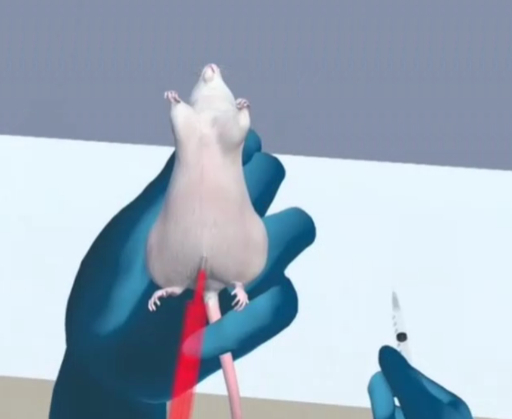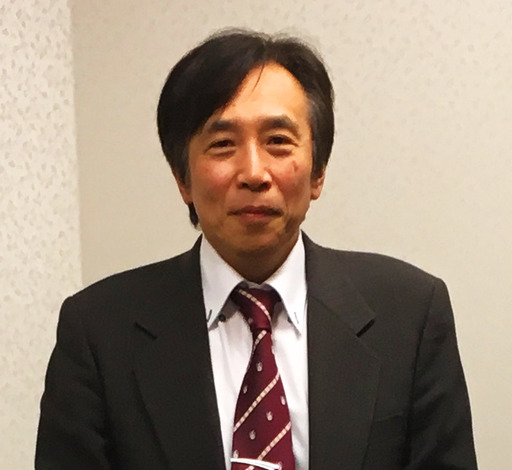J-STORIES - Animal testing has been used in medicine since the time of the Ancient Greeks and plays a key role in the development of new drugs. However, not only are there growing ethical concerns today about using animals, in Japanese universities the practicability of animal experiments is under threat from budget cuts, labor shortages, and potential for accidents.
If only there was a way to conduct experiments without taking the lives of animals and also make things easier for researchers and medical students? That was the question posed by Shimane University and Osaka-based company Avantec. Their solution was a VR-based 3D experimental animal simulation. In October 2023, the medical start-up ERISA began marketing this system to use in training pharmacologists.
.jpg)
According to Professor Koichiro Wada of Shimane University's Faculty of Medicine, who spearheaded the development of the simulator, although some experiment simulators are already in use, they tend to be complicated and difficult to use. The budget for training has been dramatically reduced, so it was very difficult to introduce expensive equipment.

“We introduced a tablet-based training simulator, but the 2D video was not enough and we felt the need for a more realistic simulator,” he told J-Stories.
The newly commercialised pharmacology VR simulator BMP-VR is operated while wearing a VR headset and using a controller. But instead of 2D images, the display uses 3D animation to show the animal's movements and reactions.
Once students put on the headset, a virtual mouse appears in front of them. Students devise and select combinations of medicines to suppress various pre-programmed symptoms, then observe how the mouse reacts. Students can repeat this learning process until they compile their results in a report.

.png)
Wada points out that a single experiment that would take up to an hour and a half to observe a reaction when using animals can be completed in two to three minutes using VR simulation. Moreover, an experiment can fail as many times as necessary, something which is not allowed in clinical practice, thus deepening the learning experience.
A VR simulator costs 120,000 yen for the first year, including equipment leasing costs, learning app usage, practical training tasks and sample answers, then 70,000 yen for the second and subsequent years. ERISA CDO [Chief Digital Officer] Yoshiyuki Notsu, who is also in charge of sales from the company, told J-Stories that the technology can help universities deal with labor shortages and reduce costs.
“We had envisaged it being used for practical training at universities, but we are also receiving interest from companies that conduct animal experiments,” he said.
The company is developing domestic sales through the Japanese Pharmacological Society and intends to expand its sales network overseas. According to Notsu, market research has already started for South Korea, India and other countries, and the company will also target the CINP World Congress of Neuropsychopharmacology, to be held in Japan in May 2024, as a venue for overseas promotion.
.jpg)
Wada said that local universities in particular suffer from lack of money, personnel, and training equipment. All universities face issues with animal bites and needlestick accidents during practical training, as well as students refusing to take part in animal experiments. At Shimane University, 98.1% of students who used the VR simulator expressed a high degree of satisfaction with the usefulness of the training and some commented that they appreciated not having to kill animals.
In Japan, some medical faculties use 400 to 500 mice for experiments during pharmacology training. Even before introducing the VR simulation, Shimane University used around 100 mice but now this figure has been reduced to around 30, said Wada. The students, meanwhile, have welcomed the reduction in time spent on practical training with live animals and especially that they can still learn in a realistic way without harming animals.
Going forward, the company intends to increase the number of registered drugs and type of dose. It also hopes to expand use of the system to physiology and other animal experiments, as well as pharmacology. Wada told J-Stories that preparations are already underway to use the VR simulator in bacteriology and virology training.
Medical schools in the US ended practical training with live animals in 2016 due to animal welfare concerns and animal experiments are also on the decline around the world.

“In Japan, our aim is to ultimately reduce the use of animals close to zero in cases where VR can be used instead. However, experiments using live animals are sometimes necessary to properly understand the actual effects on living organisms,” said Wada.
Translated by Tony McNicol
Top page photo provided by ERISA
For inquiries about this article, please contact jstories@pacificbridge.jp
***
Click here for the Japanese version of the article
.jpg)
![[Tokyo Updates] Is Hill-Farmed Salmon Here to Save Us?](https://storage.googleapis.com/jstories-cms.appspot.com/images/173258722885374_09952-thumb-1600xauto-10881_smallthumbnail.jpeg)
![[Tokyo Updates] Old and Full of Potential: Why a Swedish Model Is Reviving Abandoned Houses in Tokyo](https://storage.googleapis.com/jstories-cms.appspot.com/images/1732603609687d6b0a861ef75d954729578323092323fe00ad55e-thumb-1600xauto-10186_smallthumbnail.jpg)
![[Tokyo Updates] Making Space Development Open for All](https://storage.googleapis.com/jstories-cms.appspot.com/images/1732521298402c3af387cf9df027b91f0e9f2626b300713b93850-thumb-1600xauto-10594_smallthumbnail.jpg)

![[Podcast] Japanese technology to supercharge human fertility (Part 3)](https://storage.googleapis.com/jstories-cms.appspot.com/images/1766558713084place-for-scientific-research-2025-03-07-14-08-49-utc%20(1)_bigthumbnail.jpeg)
![[Interview: Part 2] A digital approach to tackle child hunger in Japan with dignity](https://storage.googleapis.com/jstories-cms.appspot.com/images/1766130666509unnamed_bigthumbnail.jpg)
![[Podcast] Japanese technology to supercharge human fertility (Part 2)](https://storage.googleapis.com/jstories-cms.appspot.com/images/1765863548035unnamed-7_bigthumbnail.jpg)
![[Podcast] Japanese technology to supercharge human fertility (Part 1)](https://storage.googleapis.com/jstories-cms.appspot.com/images/1765440905082unnamed_bigthumbnail.jpg)
_bigthumbnail.jpeg)





![[Interview] When digital and physical worlds meet](https://storage.googleapis.com/jstories-cms.appspot.com/images/1747974430456unnamed-2_smallthumbnail.png)




_smallthumbnail.jpeg)

![[Interview: Part 1] From nourishing souls to feeding the hungry](https://storage.googleapis.com/jstories-cms.appspot.com/images/1763695595492unnamed_smallthumbnail.jpg)

